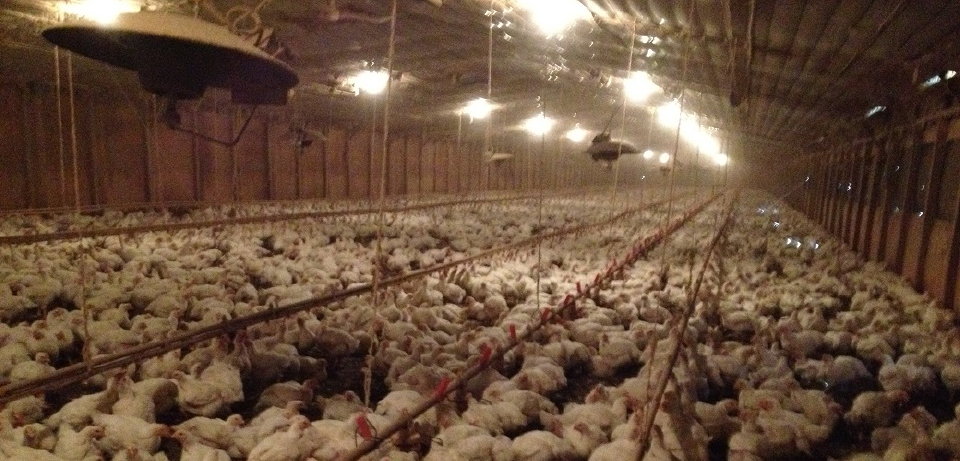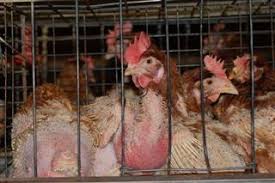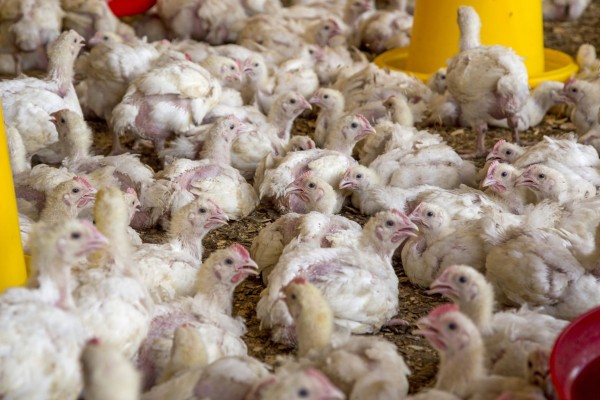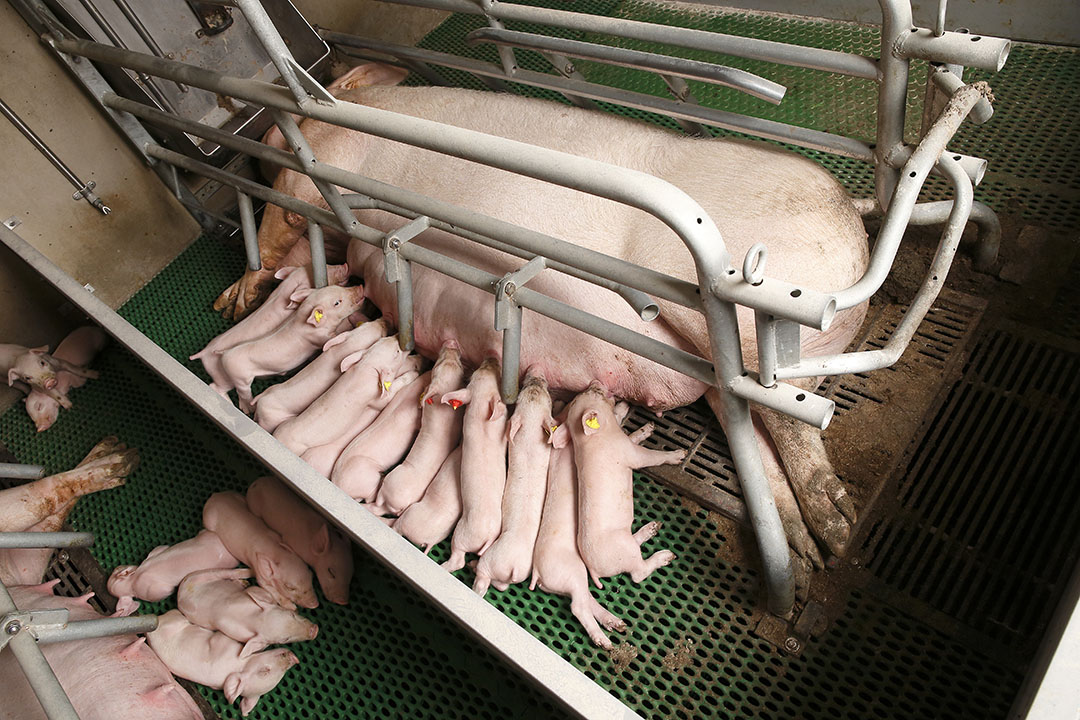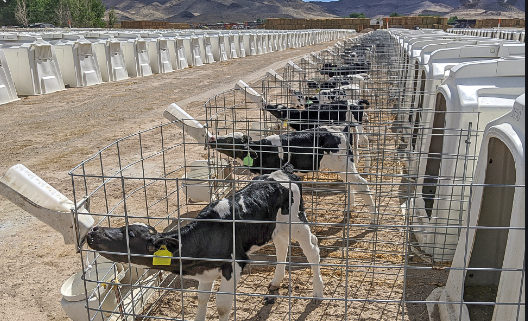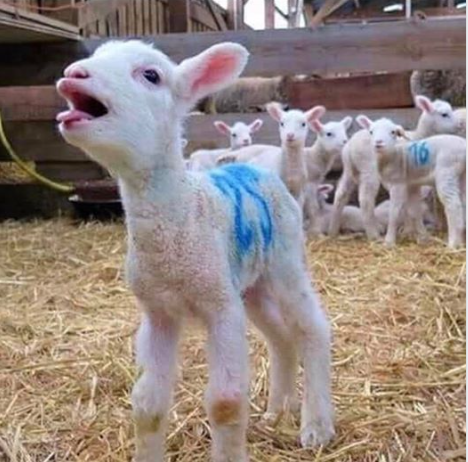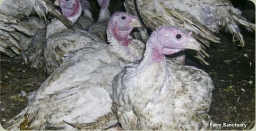The lives of most farm animals in Canada
Chickens
Most egg-laying hens are kept in small, cramped battery cages where they are cannot stretch their wings, walk around or perch. Each bird has less space than a sheet of notebook paper. They lose feathers and their skin is damaged from rubbing against the cage and other hens.
Chickens that are raised for meat (broiler chickens) are raised in groups of 5,000 to 65,000 birds in large sheds. The lights are kept low so the birds are not too active. They are bred to grow quickly — so quickly that their legs cannot hold their weight.
These chickens never go outside. Their lives may be the worst of all the farm animals.
Pigs
Mother pigs are kept in "sow stalls" while they are waiting for their piglets to be born. The sow stalls are so small that the pigs cannot move forward or backward or even stand normally. After the babies are born, the mother moves to a different kind of stall called a farrowing crate while the baby piglets feed. The farrowing crate is also very small, with only enough room for the mother to lie in one position. Then she goes back to the sow stall again to wait for her next litter of piglets to be born. And that’s how she lives her entire life.
Like the chickens, she never goes outside. She never feels grass under her feet or the sun on her back.
Cows
Dairy Cows produce milk for their calves, just like human moms produce milk for their babies. But calves are taken away from their moms when they are still babies, so their mom's milk can be used for people. The calves are sent to live in hutches (see the picture on the right.) When the mother cow cannot find her baby, she will constantly moo, trying to call her calf. She will do this for weeks. Some cows will even jump fences to find their babies. The female (girl) calves, will grow up to live the same life as their moms, producing milk for their calves, which will all be taken away from them. The male (boy) calves, will all be killed for their meat (veal).
See the story of one lucky cow mom who went to a sanctuary and was reunited with her baby.
Sheep and Lambs
Sheep and lambs are raised for meat, milk and wool. As with dairy cows, lambs can be removed from their mothers just a few hours after they are born. And instead of drinking their mom’s milk, they’re fed a replacement for milk. Lambs that are raised for food stay with their mothers for two months, and are slaughtered before they are six months old. Sheep are scared easily, and any rough handling can be very stressful for them.
Turkeys
Like chickens, turkeys live in cramped barns with thousands of other birds, often with no natural light. Turkeys also are bred to grow very quickly. That means that as the birds get bigger, they have less and less space in the barn—each bird has less than two square feet of space in the barn. Because they’re crowded, they fight and injure each other, and many lose feathers.
